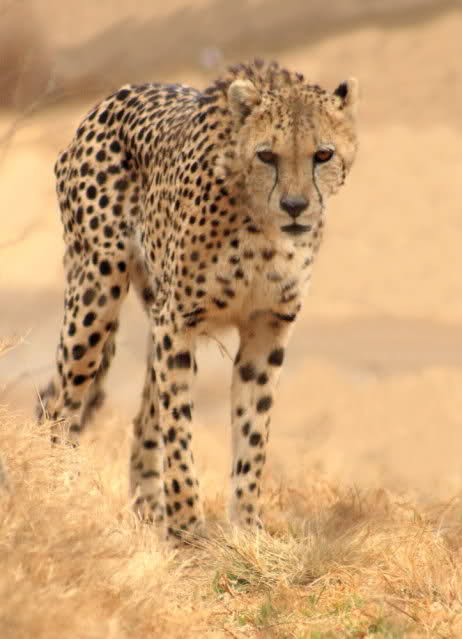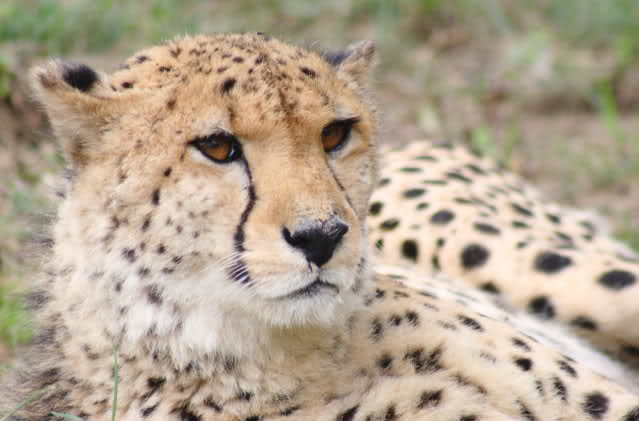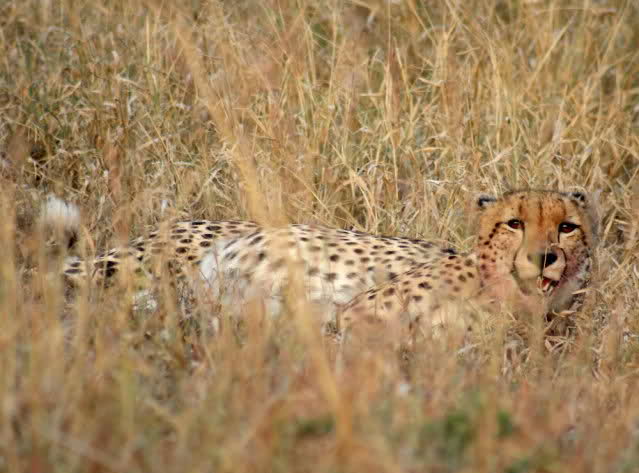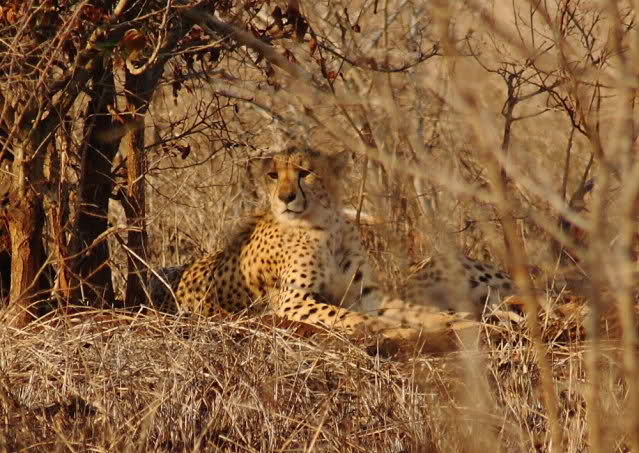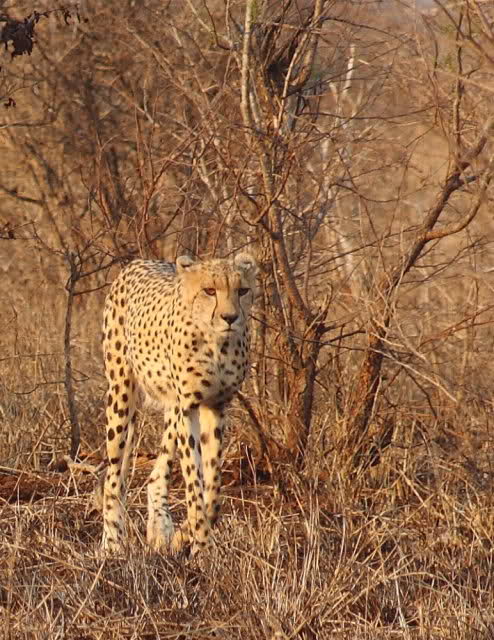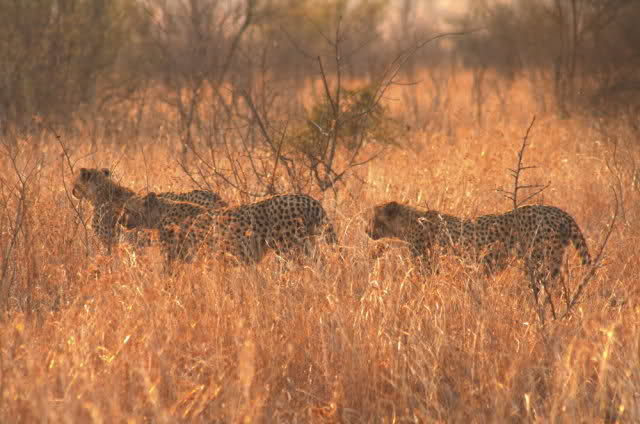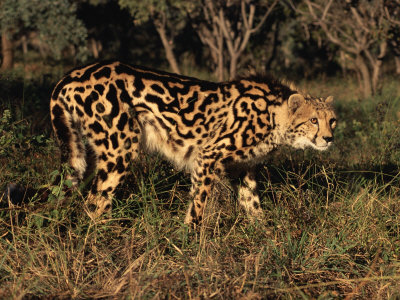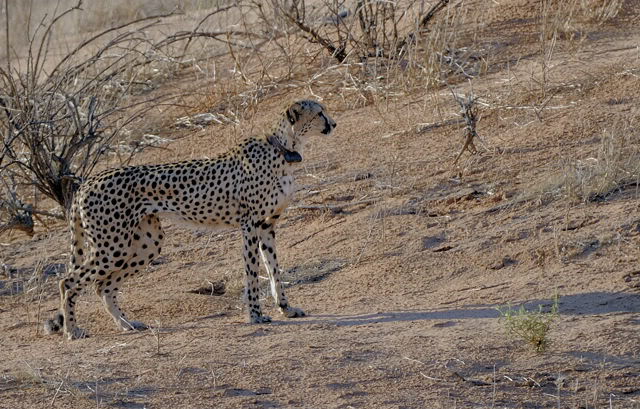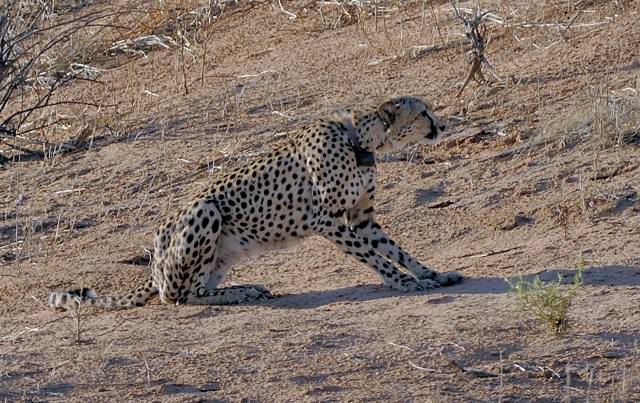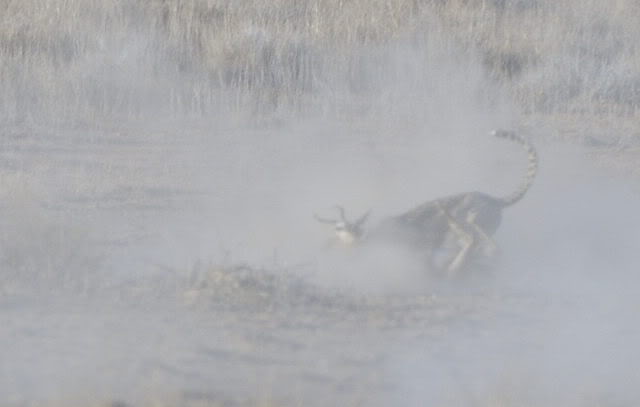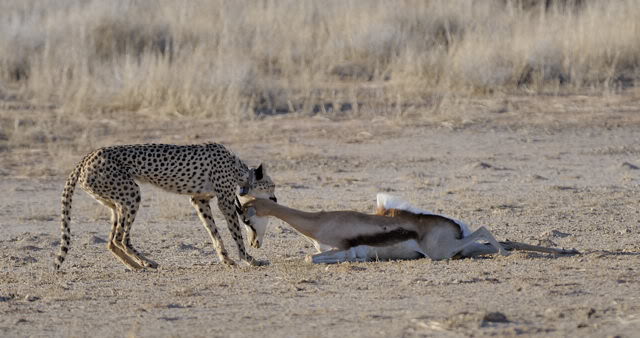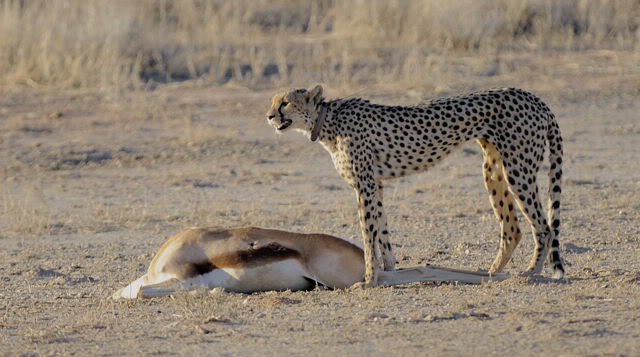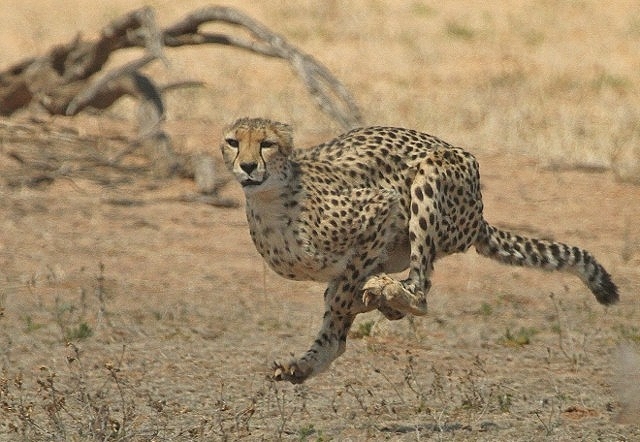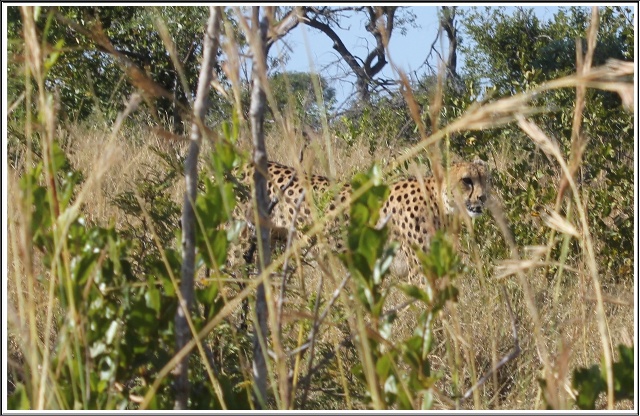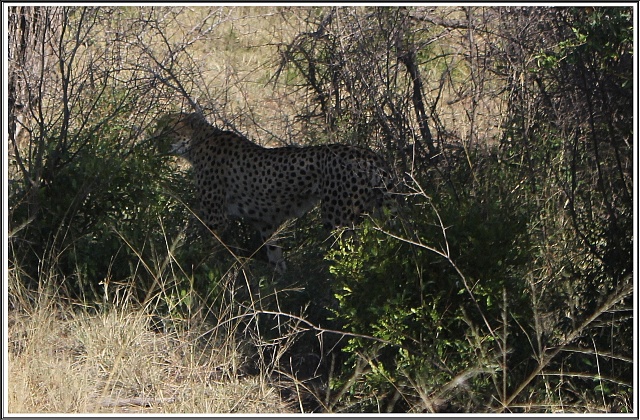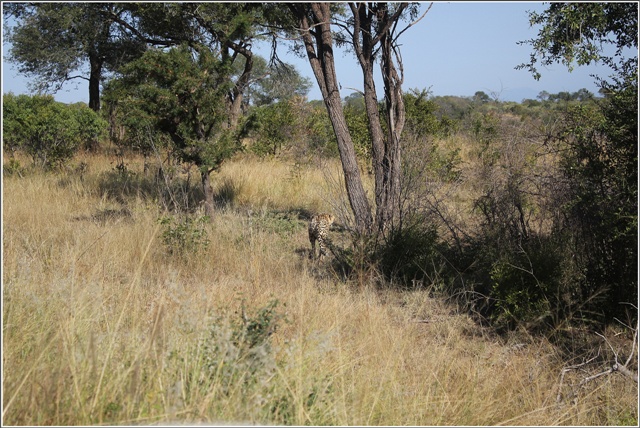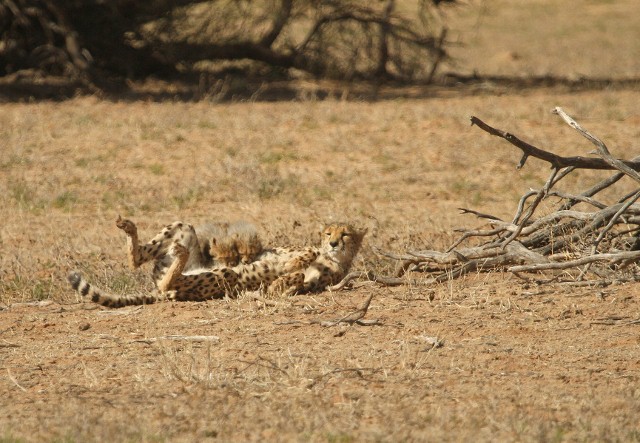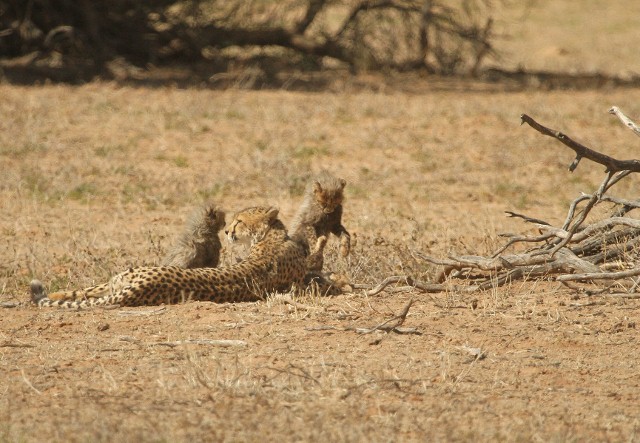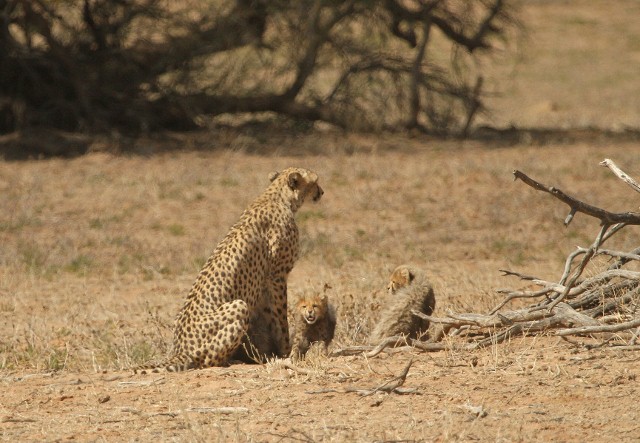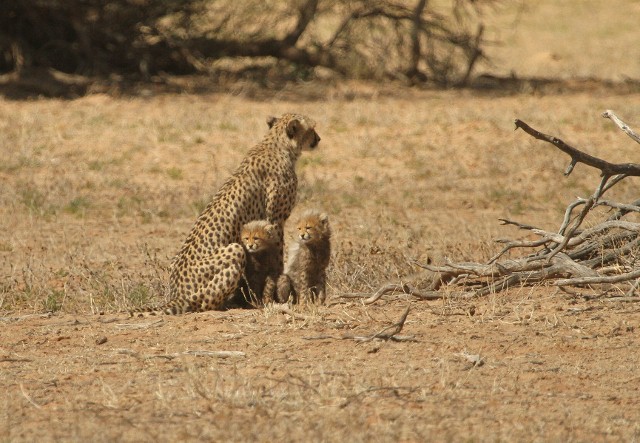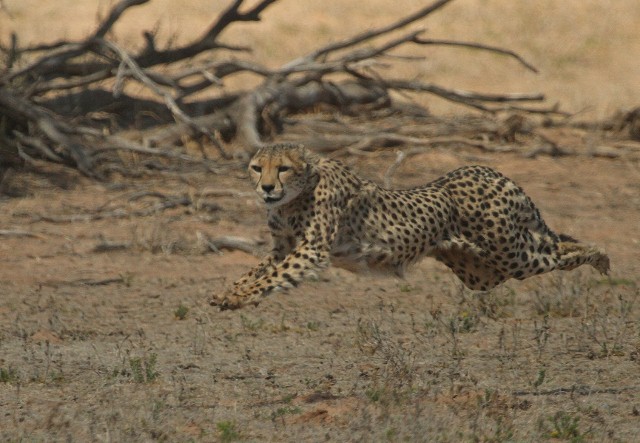Looks like I have been herded into this. -O -O
This cat is truly built for speed! Virtually every part of its body is adapted in some way to help it run faster.
Special paw pads and semi-retractable claws provide great traction. Large nostrils and lungs provide quick air intake; a large liver, heart and adrenals also facilitate a rapid physical response.
A long, fluid, greyhound-like body is streamlined over light bones. Small collarbones and vertical shoulder blades help lengthen the stride. The tail acts as a rudder for quick turning plus the eye's retinal fovea is of an elongated shape, giving the cheetah a sharp, wide-angle view of its surroundings.
The dark tear marks beneath each eye may also enhance its visual acuity by minimizing the sun's glare. The spine works as a spring for the powerful back legs to give the cheetah added reach for each step. But the great speed is very taxing physiologically.
The top speed, 71 miles per hour (114 kilometers per hour), can usually be maintained for only 200-300 yards. (274 meters).
At that point the cheetah's body temperature increases from the exertion and rest is mandatory as their brains are overheating and they would die if they do not rest.

"Longing for the bush is a luxury many have.
Living in the bush is a luxury that only a few have"
